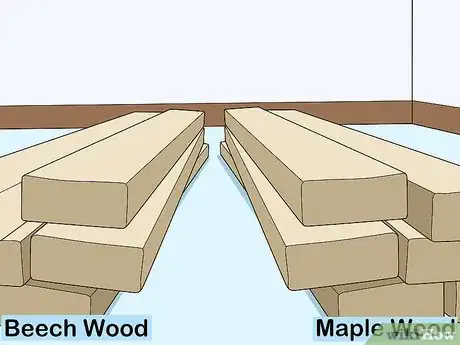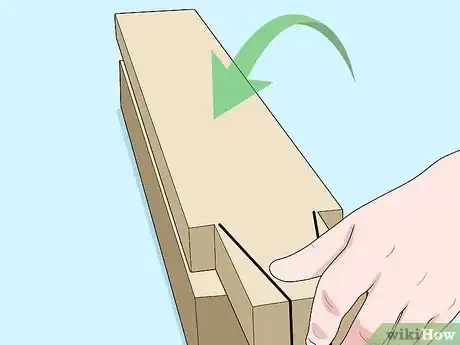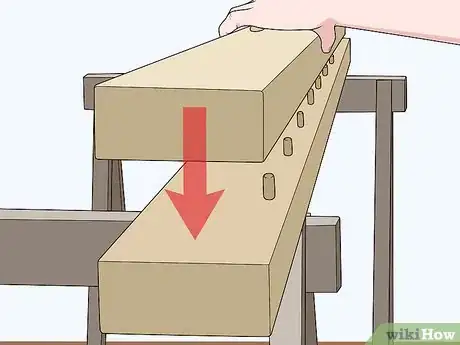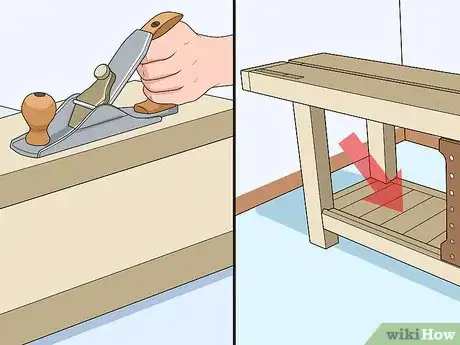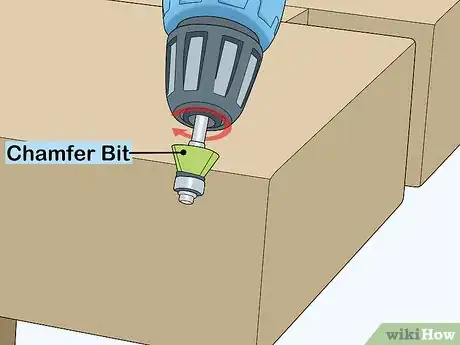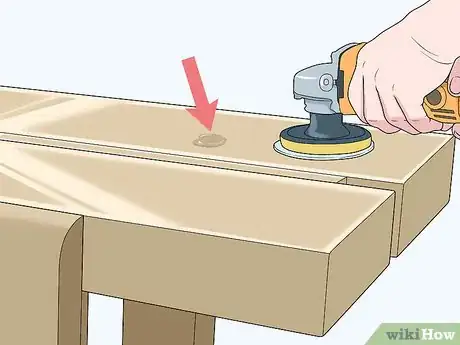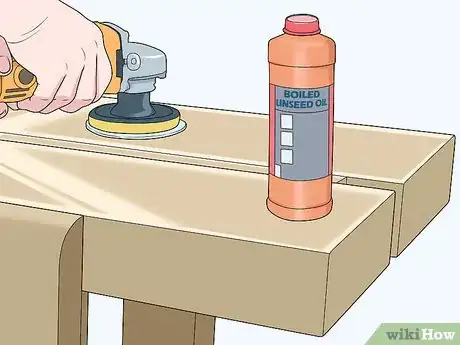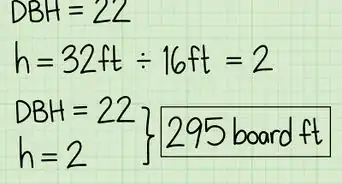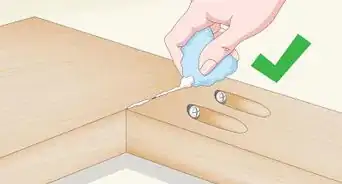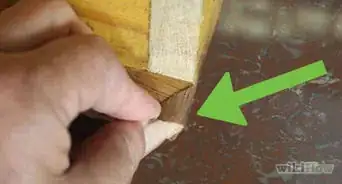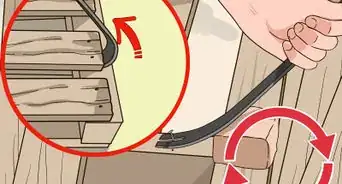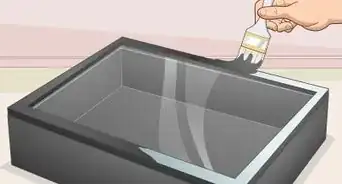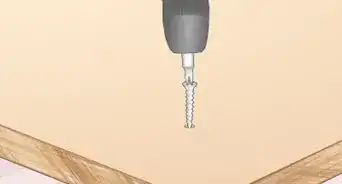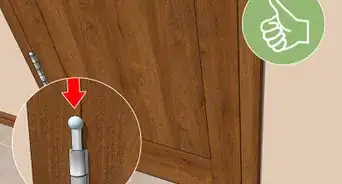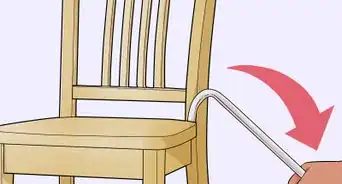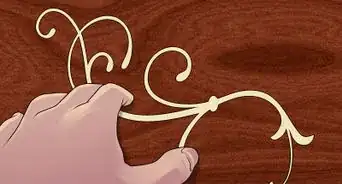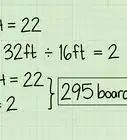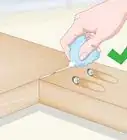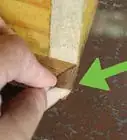X
wikiHow is a “wiki,” similar to Wikipedia, which means that many of our articles are co-written by multiple authors. To create this article, 20 people, some anonymous, worked to edit and improve it over time.
This article has been viewed 38,760 times.
Learn more...
If you want to build a workbench, look no further than the Roubo workbench. It is a French workbench designed by A. Roubo in the 18th century. The distinctive, timeless style of this design will make the workbench a centrepiece to your workshop.
Steps
-
1Choose a style of Roubo workbench. The original design was built with heavy straight legs; some designs had rear legs set at 10 to 12 degrees toward the center. These benches had large heavy single slabs. Modern Roubo workbenches are built with laminated slabs of wood for tops with leg vices. The original design also had a bench hook on one end of the front side and dog holes for hold downs. Planing stop, through dovetail and tenons, were standard. Todays Roubo's workbenches come in many different styles and types, allowing you to choose a style appropriate to your needs and workspace.
-
2Choose a material from which to build the workbench. The woods most commonly used by the large companies are maple and beech. Other woods used include oak, cherry, walnut, poplar, southern yellow pine and Douglas fir. It doesn't have to be an expensive hard wood; choose a wood which fits your budget or which is available locally.Advertisement
-
3Let your lumber sit in your workshop for a few weeks. This gives it time to adjust to its new environment movement wise. Cut your lumber to rough size, stack and stick it; this lets it move before you start milling it.
-
4Make a list of the pieces needed before cutting. Use the drawings of your bench to find the sizes and number of pieces you need before cutting. This will maximize lumber usage.
-
5Laminate the stock. It is as simple as surfacing all the stock to be laminated and squaring the glue side of all your stock. Apply an even smooth layer of glue to the stock to be laminated and use a good even clamping pressure and lots of clamps. Don't glue more than two or three pieces at a time, unless you're very fast and accurate at aligning and clamping. Trying to glue and align these heavy pieces of stock all at one time is difficult and can result in misalignment if you overdo what you can handle alone.
-
6Decide on the height of the bench and the thickness of the top. Cut your lumber for the legs about a 1/4-inch wider and longer than needed so you have room to smooth and finish the legs to size. If you're using lumberyard 2xs laminating three or more pieces together makes a nice heavy leg.
-
7Lay out the angle for the back legs. Use a good bevel gauge to layout the angle, typically 12 degrees, for the back legs. Cut any mortises and drill all the holes in the legs. Cut and smooth to size.
- If you want a knock down workbench, one that is easy to take apart and move, you can use threaded rod or long lag screws to put it together. If you want to make it a knock down bench then don't glue the long stretchers into the mortises, just use lag screws about 8 inches (20.3 cm) long. Assemble the legs and short stretchers with glue and pins.
-
8Make your short stretchers. These will require one end of them being cut to match the 12 degree angle of the rear legs - if you're angling the rear legs, that is. The short stretchers can be one piece boards or two or three laminated together to form a heavy leg assembly. Take your time here and get a good fit. Dry fit the legs and short stretchers together to ensure they fit properly. You can then disassemble them and do your final glue up for assembly. Dry fitting before final assembly will help prevent mistakes and gives you a chance to see the base before glue up. This allows you to make any changes as needed. However you design your bench be sure that all the parts compliment each other. As don't have a 4 inch (10.2 cm) tick top on 3 inch (7.6 cm) legs. If your top is 3 or 4 inches (7.6 or 10.2 cm) thick then the legs should be about 4 to 5 inches (10.2 to 12.7 cm) square with stretchers about 3 inches (7.6 cm) thick and as wide or wider than the legs are square. But this is just one opinion.
-
9Attach the long stretchers between the leg assemblies by dry fitting them as above. When making your base assembly, build it so the top overhangs on the ends for attaching vises or other hardware you want. Make the front edge of the workbench even with the front face of the front leg. With the 12 degree angle of the rear legs you should have about a 6–8 inch (15.2–20.3 cm) overhang to the rear of the bench top. The base size must be set so these overhangs can give way to the vises and whatever you want to add.
- Leave to set.
-
10Cut and laminate the sections for the top. These sections are four pieces laminated together to make up one section. These are long pieces and help with alignment would be highly beneficial as laminating the top pieces four at a time can be difficult. Use as many clamps as you need here and get an even clamping pressure. Ensure that you have an even layer of glue on each piece to prevent gaps and delaminations later. Leave each section overnight to let the glue cure. Repeat this step until you have enough laminated sections to equal your workbench top width. If your workbench is 24 inches (61.0 cm) then you need 4 sections.
-
11Assemble the sections, adding one section to the other each day. Allow each of these laminations to cure overnight. Wiping off dripping glue will be a plus when it comes time to flatten and smooth the top on both sides.
-
12Surface the bottom side of the top first. Starting your flatting and smoothing on the bottom side of the top is a good way to learn to use your hand plane and being the bottom side of the top will hide your learning curve. Use a #5 to scrub the top and a #6 or #7 to flatten and smooth. If you don't have the #6 or #7 plane, you can get the surface flat and smooth by just using your #5 and adjusting it to the type of planing you're doing, scrubbing, flattening and smoothing. Take your time and get the bottom side of the top flat and smooth. This won't happen in just a few hours - you will know how to use your plane correctly by the time that you are finished! Once flat and smooth, you can attach to the base.
-
13Choose the method for attaching the top carefully. Attaching the top is done with a mortise and tenon joint. You can use a short tenon or a through tenon and dovetail which is the way this workbench was originally designed. However, you are free to use any method you want; be sure to research this method well before starting it. If it's a knockdown type bench, keep in mind how you will remove the top if ever needed to.
-
14Set the workbench upright and flatten and smooth the top side as you did the bottom. Using a plane and wending sticks will help get the top very flat.
-
15Sand the entire bench, base and top, smooth. Using a chamfer bit on the edges or a round over bit helps prevent chipping and splitting of the edges and on the legs. Don't chamfer or round over edges where you're going to attach vices.
-
16Check the workbench for any problems and missed spots when you are sanding.
-
17Apply a finish. The finish on the workbench is a matter of personal taste. Boiled linseed oil is commonly used. You could even mix other finishes in with it or over it. Keep in mind that whatever you do to the bench top, you must also do to the bottom side of the bench top. This will help prevent the top from warping or moving unevenly.
Advertisement
Warnings
- Don't over spend on lumber and hardware⧼thumbs_response⧽
- As you build, don't cut more wood than you can use in that day. Cutting too much wood to size and not using it for a day or two may result in lumber that has moved, cupped, warped or twisted.⧼thumbs_response⧽
- Follow correct safety procedures when using a table saw, routers and any power tool.⧼thumbs_response⧽
Advertisement
Things You'll Need
- Lots of clamps 12 inch (30.5 cm) F style to 36 inch (91.4 cm) pipe clamps
- Yellow glue, woodworking glue
- Help lifting the top and base
- A good drawing or set of plans or detailed instructions
About This Article
Advertisement

